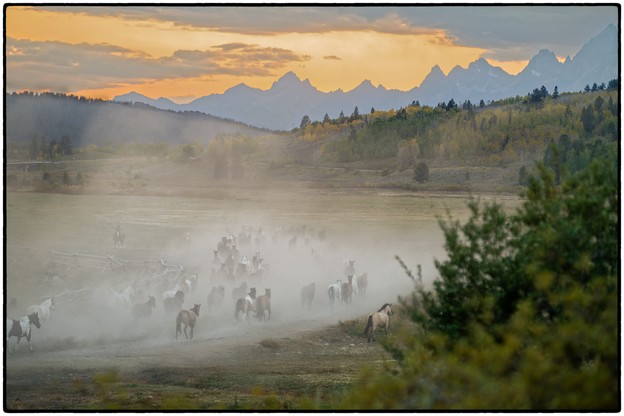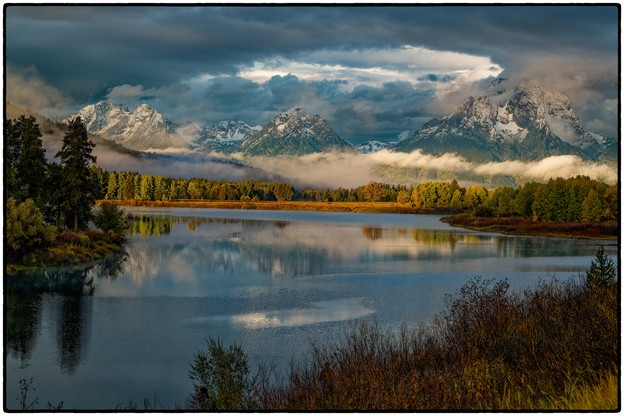|
David Buchholz
Jadyne and I had not visited Yellowstone or the Tetons in more than fifty years, so we added Glacier to the list, planning to spend three days in each park. We chose to leave September 10th, knowing that kids would be back in school and snow was a week or two away. We had beautiful warm sunny days, cold nights, and spectacular scenery. As a Californian for almost sixty years I thought I might need a Visa when visiting. I'm posting a few of the images from the trip, then adding a link to more.
We chose a ranch five miles away from the Tetons to spend our last three days. Short on amenities, but the sunset view from our room made up for it.
It rained heavily the night before we left. I hoped that if the sky cleared at sunrise we'd be gifted with the first snowfall of the year on the Tetons.
Signs in West Yellowstone warned us of road construction before Old Faithful, so after sitting for thirty minutes in stopped traffic I just wanted to walk down the road a bit. Someone said something about a herd of buffalos, but I wasn't worried, thinking that they would be off to the side, not crossing the road right next to me. I was mistaken.
The fifty-six miles of Glacier's spectacular "Going to the Sun" Road takes the better part of the day, but I loved the hikes to hidden waterfalls just as much.
I have put about fifty more images on my website. http://www.davidkbuchholz.com/three-parks
|